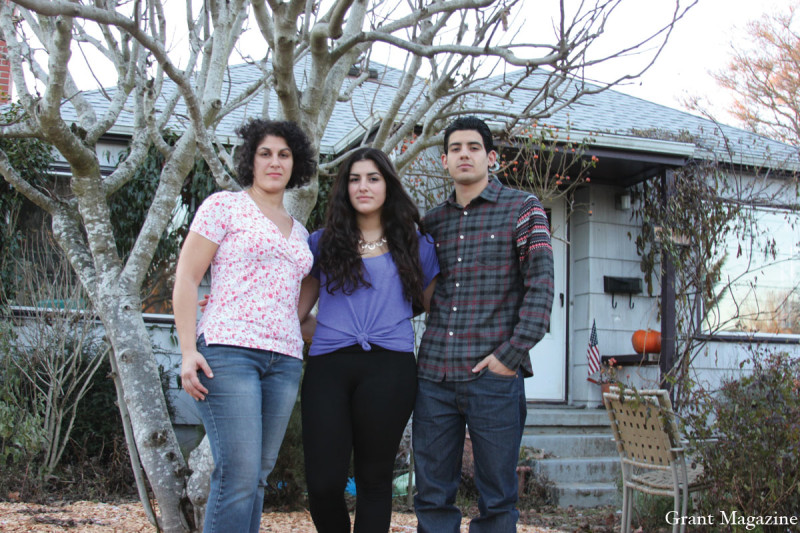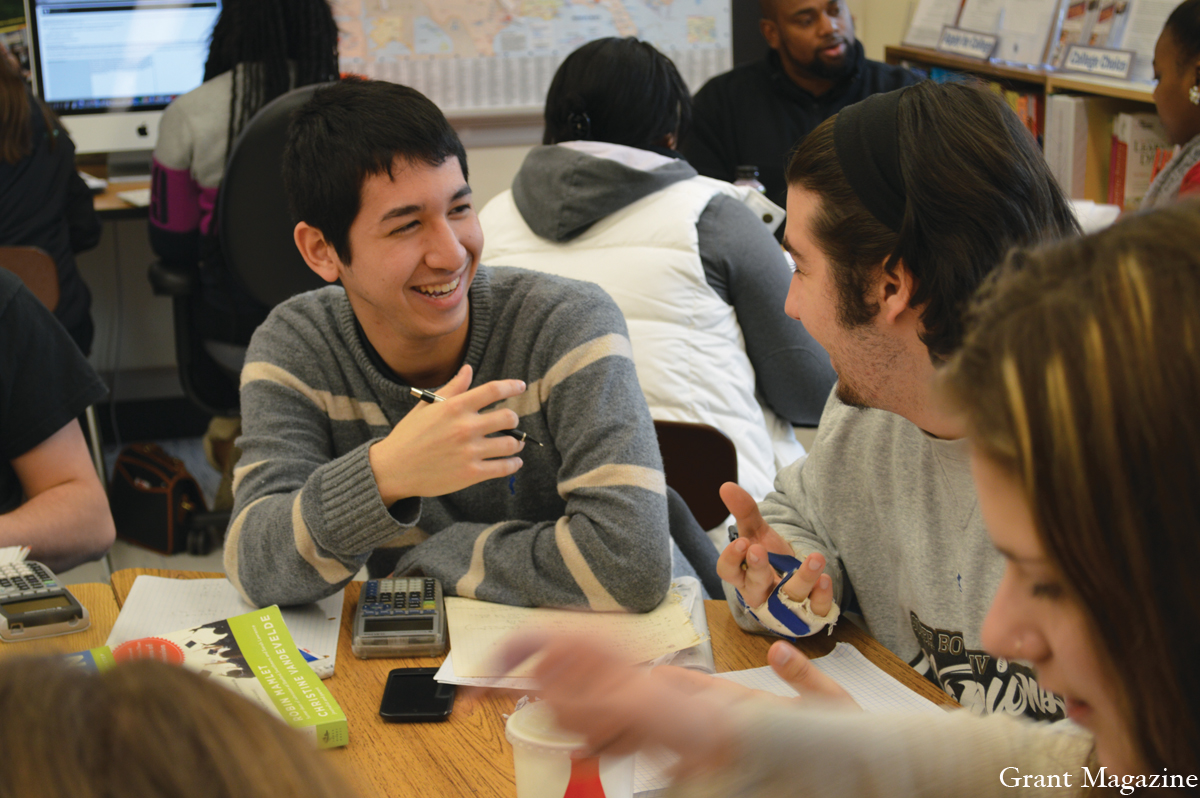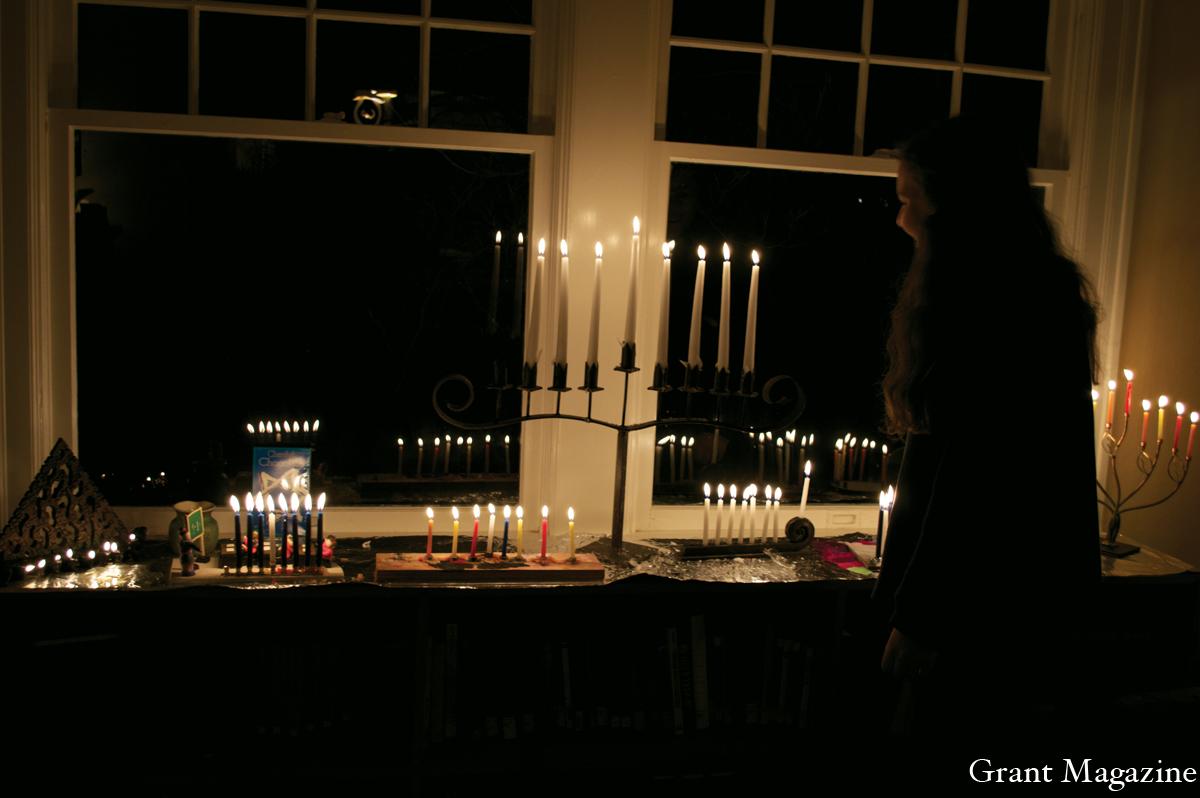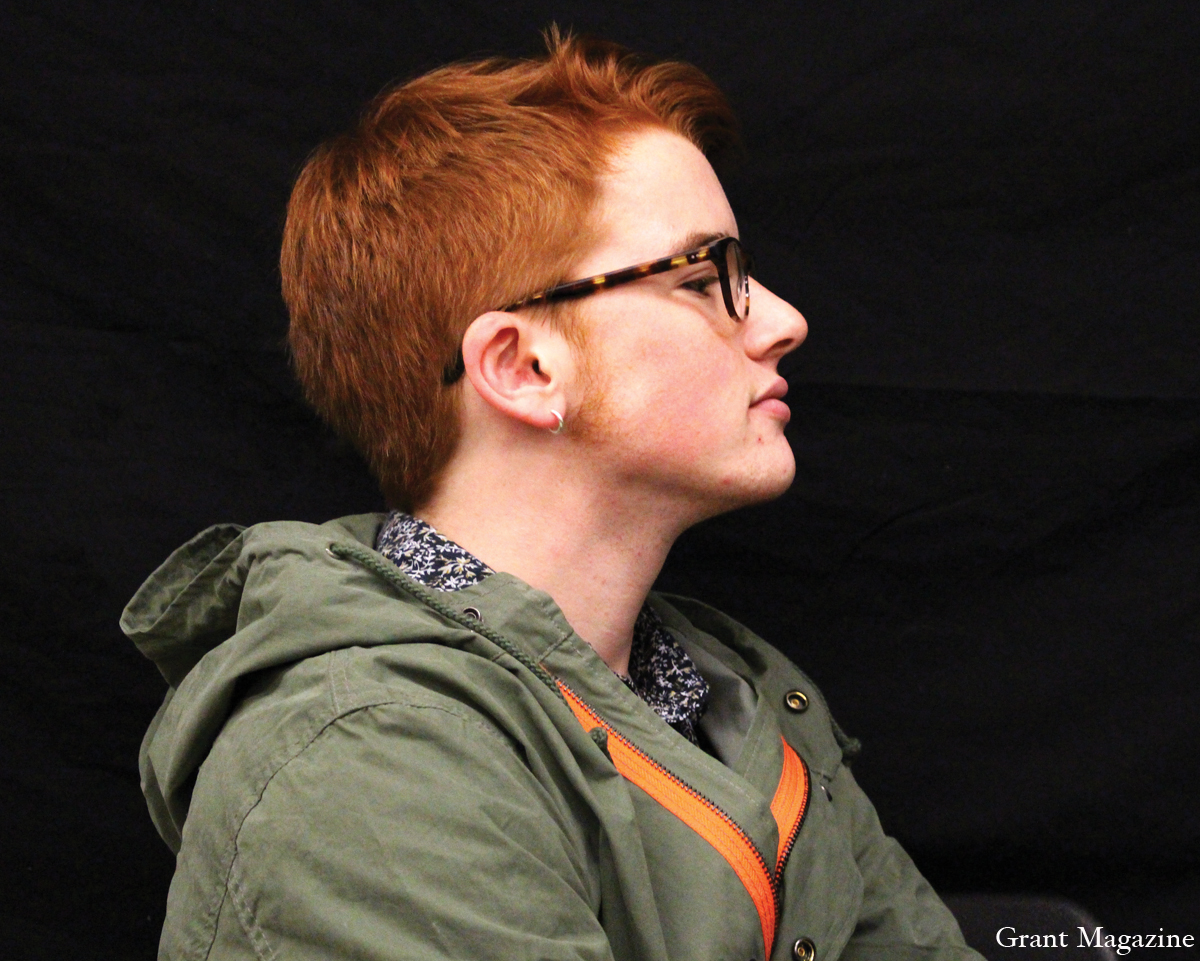
Eleven months ago, Grant freshman Maddy Piazza’s cousin was kidnapped on a rural highway outside of Tartus, Syria, and held for ransom. The captors wanted a million Lira, about $10,000 in U.S. currency at the time. Piazza’s extended family haggled it down to 500,000 Lira and came up with the money in less than a week.
That was when the Syrian conflict – a bloody war that started with nation-wide protests in March 2011, calling for the resignation of president Bashar al-Assad – got real for Piazza. “When my mom told me about my cousin getting kidnapped, that was like a huge, like, kind of an alarm in my head,” she says. “I was really worried because I do have a lot of younger cousins there.”
The ransomed cousin had been getting paid to drive a family back from the coast. The kidnappers were most likely just bandits, pushed to crime by the economic pressures of the times. That was lucky for him. “If they were radicals, they would have killed him,” says Piazza’s mother, Leila.
The Piazzas’ extended family is part of a Christian minority in Syria that has been favored by the standing government but now faces an uncertain future.
“When it comes to regular daily life, we live exactly like the people in the United States.” – Fatten Elkhal
The conflict from their perspective is much different than the picture painted by the mainstream Western news media. For starters, the Piazzas don’t consider President Assad to be a ruthless dictator. “People would criticize the government. People criticized Bashar al-Assad,” Leila Piazza says. “Other people loved him. Generally, I got the impression that most people were very happy with him.”
Before the war, the Piazzas visited Syria every few years, usually staying with a patchwork of relatives there for a month in the summer. Most of their time was spent in Amar, a village near the Lebanese border in what is known as Wadi al-Nasarah, or Valley of the Christians. Joey Piazza, who is 18 and attended Grant, says of the people there: “Even if you don’t know ‘em, you still kinda know ‘em. They’re all related in some way or another, so it’s all just one big family.”
If you ask about their folks in Syria, Leila Piazza might show you a video of a family member singing to his newborn son, bouncing the baby up and down on his knee. “I worry so much about them,” she says. “It’s hard sometimes to watch them.”
She’ll tell you of Abu Wasim, a toothless, elderly relative who loves to brag about his fig tree. And about Dany, the talkative cousin who is always eager to practice his English skills. Dany’s twin brother, Mohaned, is the shy one, a quiet observer. Get him alone, though, and he’ll gossip like crazy.
Fatten Elkhal, 42, moved to Portland from Syria in the 1990s. She attends Saint George Antiochian Orthodox Church, a staple for Portland’s Syrian-American community. The first thing she’ll tell you is this: “When it comes to regular daily life, we live exactly like the people in the United States.”
They dress the same, she says. They have swimming pools. They love the beach. They have “the best parties on Earth.” They go out to bars. “When people read about the Middle East,” she adds, “they think we’re savages. Living in tents, riding camels, having just guns around us. This is not the truth. We are people exactly like here.”
Something that is different – or was before the war, at least – was the sense of security, Elkhal says. Syria felt way safer. The first time the Piazzas went to Syria was in 2001. Joey Piazza, who was six years old, would leave the house and be gone all day. No one worried. Even in Homs, a city the size of Portland, kids could roam the streets unsupervised without fear.
At one point, 2-year-old Maddy Piazza wandered six blocks from where they were staying in Amar. Before her mom could freak out, a relative told her there was little reason to worry. Someone would surely see her, bring her inside and feed her. “And that’s exactly what happened,” says Leila Piazza. “She was sitting there eating a cheese sandwich.”
She suggests the feeling of safety was thanks to Syria’s large police force and mandatory military service, “and because they have a kind of society where people feel responsible for each other.”
Contrary to the popular narrative about the region, she suggests there was virtually no tension between religious groups in Syria before the conflict because it was overpowered by a sense of national pride. Before you were Christian, you were Syrian. Syrian before Sunni. Syrian over Alawite. It’s hard to argue that the feeling is still widespread.
Leila Piazza says her sister in Homs no longer trusts her own neighbors, who once were like family. “What does it do to your mind when you see these things day after day after day?” she asks, referring to the violence that rages on in some parts of the country.
But even if ethnic friction was at a minimum before the war, discrimination and violence aren’t exactly new to Christians in Syria.
Bashar al-Assad’s father, Hafez, who was president from 1971 to 2000, helped protect the Christian minority, sometimes even sending troops to stand guard over their churches during service. Bashar followed in his dad’s footsteps.
Leila Piazza thinks rebel groups purposefully tried to spark conflicts between those who were once united. Supporters of the revolution say the opposite: that Assad wants to divide the country so he can stay in power.
Either way, the conflict is increasingly sectarian. Faith-based violence is on the rise.
Shadi Hakkoum, a 23-year-old Portland State University student, fled Syria a year and a half ago with his parents and two younger sisters. Their roots stretch six generations into the soil beneath Homs, where he grew up. He, unlike most Christians, was all for an uprising.
“When it first started, I was really happy because I wanted some changes in my country,” says Hakkoum. In arguments with his family, especially those living in America, he was often the only one to confront the Syrian government’s flaws.
“They were trying to be good,” he says, pointing out the positive progress that Assad was making before the war. Education was improving. Small businesses were flourishing. Computers, cell phones and ATMs, which were long overdue in Syria, became commonplace.
But the improvements didn’t stop the corruption. According to Hakkoum, bribes were a constant problem when dealing with the government, even in school. “Sometimes professors want money to let you pass some of your classes,” he says. “It’s a bad government.”
When the initial protests gained traction and turned into an uprising, Hakkoum was excited. But about six months in, he says, “I changed my mind.”
The revolutionary Free Syrian Army was quickly joined by other forces that wanted to bring down Assad. Some of the new additions to the opposition flew the black flag of jihad. “They start to kill people depending on your religion, and that’s not revolution,” Hakkoum says.
“We want revolution that makes the country in better situation, not in a worse one,” he says.
Something that seems to be consistent among Syrian-Americans – a primarily Christian community – is an unrelenting loyalty to Syria’s current government. “They’re definitely not the bad guys, no. Absolutely not,” says Leila Piazza. Others say the same.
Something else they commonly maintain is this: if the majority of the country opposed Bashar al-Assad, he couldn’t possibly hold on to power. “If the people don’t want their president, no power on earth can keep that president,” Elkhal says. It’s “common sense” that Assad himself has argued repeatedly.
But the Syrian “civil war” isn’t just an internal conflict. Just about every country in the area or with allies in the region is involved, contrary to what most of them say officially.
Israel was accused of conducting air strikes against government forces. There have been multiple reports of Iranian soldiers on the ground in Syria supporting Assad. Saudi Arabia, the wealthiest Arab nation, backs the insurgents. Lebanon-based Shia militant group Hezbollah is fighting alongside government soldiers in some areas of Syria. Russia supplies Assad’s army with weapons. The United States has poured millions of dollars into the opposition and recently sent a team of CIA commandos quietly into the area, according to Syrian news reports.
The international community was definitely paying attention on Aug. 21 when sarin gas – a suffocating nerve agent – was used in a residential suburb of Syria’s capital, Damascus, killing a reported 1,400 people.
It wasn’t the first chemical attack of the Syrian conflict, according to United Nations officials, but it caused a global uproar and prompted the U.S. to threaten a military strike against the Assad regime, which was accused of using the internationally banned chemical weapons.
Grant High School social studies teacher Jeremy Reinholt is familiar with the tumultuous history of the Middle East. In September, when a U.S. military intervention was on the table, Reinholt was concerned by the United States’ apparent shortsightedness. “If Assad falls, who fills the power vacuum?” he queried. “We can’t guarantee who rises to power in Syria, just like we couldn’t guarantee who was going to rise to power in Egypt when Mubarak fell.”
Reinholt doesn’t think mainstream media sources cover the war well enough. The Piazzas and other Syrian-Americans agree.
In January 2012, when news agencies reported that there were government snipers indiscriminately shooting people in her sister’s neighborhood, Leila Piazza called to look into it. Her sister insisted the snipers weren’t with the government. The Syrian army, she said, was going door-to-door bringing people food. They were the good guys.
Hakkoum remembers shady news reports during the early days of the conflict, too. Body counts were constantly inflated and the blame game turned into what seemed like a competitive sport. “The revolution would do crimes and they would tell that the government did this to people and vice versa,” Hakkoum says.
Both sides of the conflict are quick to point fingers – and Kalashnikov barrels – at each other, he says. “But nobody knows, you know what I’m saying? It’s kind of hard to determine who is the criminal in this whole thing.”
Hakkoum’s family applied for immigrant status in the United States 11 years ago, but the papers took a while to process. They had to take a road trip through southern Syria to neighboring Jordan to finish the paperwork and get their visas, which proved difficult because of travel restrictions. Hakkoum says many young men were trying to dodge the Syrian draft by crossing the border, so security was tight.
“However,” he says, “it was easier for us ‘cause we’re Christians.” They made sure to wear their crosses to every checkpoint.
After completing the necessary paperwork, they crossed the border back into Syria and later caught a flight out of the Damascus International Airport, arriving in Portland in July 2012. Hakkoum is studying electrical engineering at PSU and working at a restaurant in the Grant neighborhood.
Compared to most Syrian refugees, he’s doing pretty well.
The United Nations estimates that of the two million total refugees outside of Syria, many living in massive camps in neighboring countries, half are children. Some work – picking olives, sweeping hair at barbershops – to bring in a little extra money for their families. There aren’t a lot of
opportunities for education for these kids, and the schools that are around often work well over their maximum capacity.
Considering the stalemate between forces in Syria, this generation of youth may well be living in their host countries for years to come. Syrians who have lived abroad since before the war are now hindered from visiting in-country friends and family members.
Today, Maddy Piazza regrets spending so much time on her iPod and not with her relatives during her most recent trip in the summer of 2010. “I kinda kept to myself,” she says. “I feel like I didn’t really embrace, like, my family. I could have spent way more time with them than I did.”
Recently, she’s been more in touch with her heritage. This year, Piazza was named Vice President of Saint George’s youth group, the Syrian Orthodox Youth Organization. The roughly 50 kids in SOYO do what they can to pull their weight at the church.
Every September, they help run Saint George’s annual Middle Eastern Festival where vendors set up tents and dish out the shawarma. “It just feels good to be so close to my, you know, ethnicity,” she says. “I want to, like, stay in the Arab community when I’m older, too.”
“We can’t go there now obviously, because of what’s going on,” she says, but she’d much rather live in Syria than the United States.
For now, Syrians living in the U.S. can’t do much about the conflict but pray.
The future of the war-torn nation, especially Syria’s Christian community, is undeniably clouded. It isn’t clear when the country will be safe enough for refugees to return and for family members to be reunited. “I mean, everybody wants to go back,” Joey Piazza says. “Everyone’s pretty much waiting.” ♦




